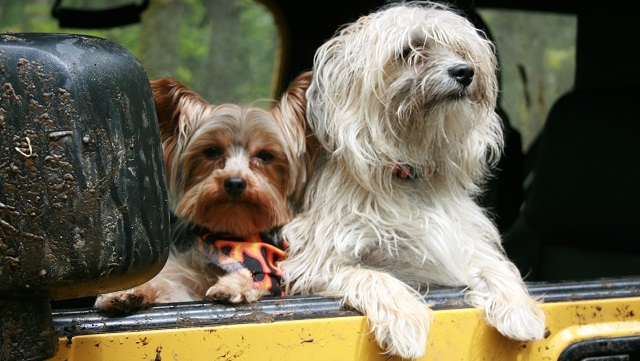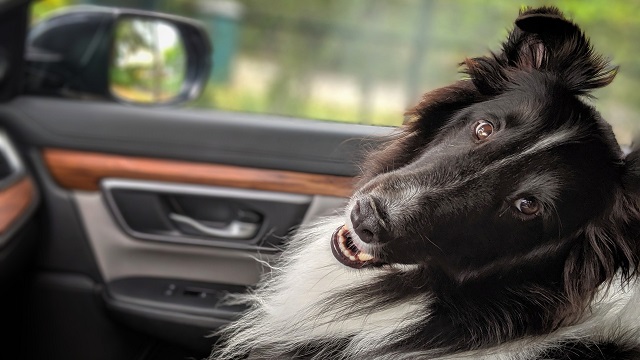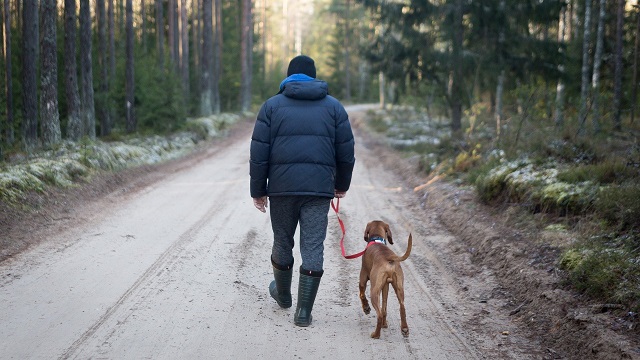Dogs can be excellent travel companions. They love adventure, look forward to fun times and are a friend you can count on no matter what. Nevertheless, just as it has done to humans, the coronavirus pandemic has slowed down and changed pet travel. So what should we keep in mind regarding dog travel and COVID-19?
At the peak of the pandemic, flights and other forms of passenger travel were shut down or heavily restricted. The novel Coronavirus is likely to be with us for a while but many countries have started to lift travel bans. Nevertheless, travelling with a dog has changed dramatically in the Post-COVID 19 world. Here’s a look at some of the most important factors you have to bear in mind when travelling with your dog.
1 – Coronavirus Infection

There have been a couple of cases reported of dogs testing positive for COVID-19. But in comparison to the infection rate in humans, the risk of your dog catching the novel coronavirus is low. And whereas cats infected by the virus have displayed COVID-19 symptoms, instances of dog infection have been asymptomatic. Also, there’s no evidence so far that an infected dog can transmit the virus to humans.
Nevertheless, the virus could in theory be relayed via pet fur, though the likelihood of transmission is still low. That said, if you have been diagnosed with the coronavirus or are in precautionary self-isolation during travel, it’s best to avoid contact with your dog. Get someone else to care for your pet until you are in the clear.
2 – Dogs and Social Distancing

Since, theoretically, dogs could pass on the novel coronavirus via fur, leashes and collars, you may need to follow social distancing protocols for your dog during travel. Don’t allow your pet to approach strangers. In this time of heightened awareness of personal space, it’s not only unsafe but somewhat rude to let your pet to approach someone without their express permission.
Children can be quite adventurous so you have to ensure you minimize contact between your dog and them as much as you can. Be especially careful if you are travelling through or to an area with a high rate of novel coronavirus infection. Getting a dog carrier could certainly help you maintain tighter control on who your pet comes into contact with.
3 – Know Dog Travel Restrictions

Before you set out on any significant travel with your dog, take time to familiarize yourself with any COVID-19 restrictions that apply to pets. For example, some airlines have placed a blanket ban on pet travel whereas others establish restrictions on having pets in the plane’s cabin.
Many countries still retain some form of COVID-19 restrictions or conditions on both human and pet cross-border travel. If you aren’t conversant with the pet travel restrictions relevant to your trip, it could cause major inconvenience or completely disrupt your plans.
4 – Dining

As restaurants and cafes resume operations with the lifting of COVID-19 restrictions, you are probably looking forward to dining out with your dog again. But dining is one area that may have changed forever in the post-COVID 19 world.
In some countries, dogs are limited to outdoor tables or the takeaway section only. Even if the restaurant permits your dog inside, it’s perhaps a privilege that’s well worth reconsidering. Viruses like COVID-19 are more likely to be transmitted indoors rather than outdoors. So the outside tables are actually in you and your dog’s best interest.
5 – Plan Well Ahead of Time

In times of a national or global crisis like the COVID-19 pandemic, planning ahead is essential. For instance, vet clinics could be jam packed with appointments and that can make it more difficult for you to get your dog the vaccines you need before your trip.
However, even with the most elaborate fore-planning, there’s just no certainty that things will go according to plan. A new outbreak or ‘second wave’ in your home area or destination could force sudden changes to your travel itinerary. The travel industry is bound to remain in this state of flux for a while as it grapples with the unprecedented challenge that is COVID-19. For this reason, always have a travel plan B and perhaps even plan C that would facilitate dog travel.
A Long-Term Change?

There’s no question that the world of dog or human travel will never be the same again even if an effective vaccine for COVID-19 is found. Governments, organizations, businesses and individuals will see the travel restrictions as key to keeping tabs on the spread of any similar respiratory illness. So take note of these factors in order to keep at a minimum any pandemic-related disruptions to your dog’s travel plans.
Article written by Ashley Lipman, Chief Editor at TheBlogFrog.
If you need any pet travel advice, remember – our Findster Care vet team is glad to help!
Have you wondered about how to train a dog to be comfortable with face masks? We’ve got answers!






